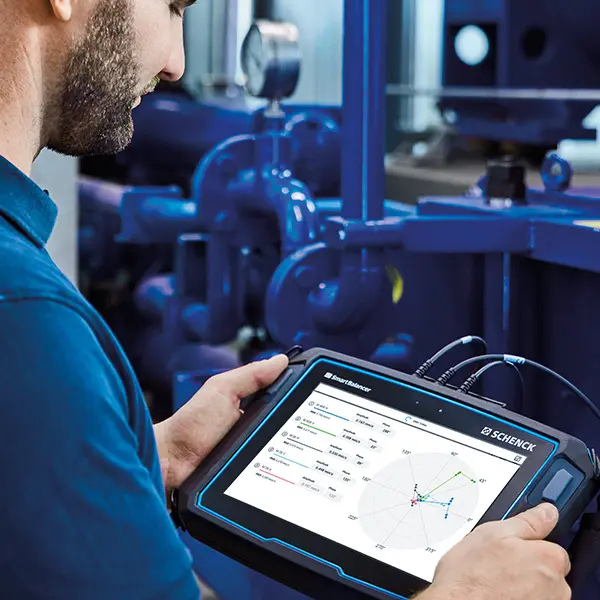Centrifugal testing Spin testing for research, development and production.
If rotors are subject to high centrifugal forces during operation, you must be sure that they will not permanently deform or burst. Proven methods include strength tests and durability tests at speeds above the operating speed, burst tests or the performance of service life tests using cycle tests. This gives you the certainty you need for the operation of your rotors. We carry out a variety of necessary tests on your rotating components for new and further developments or as part of quality assurance.
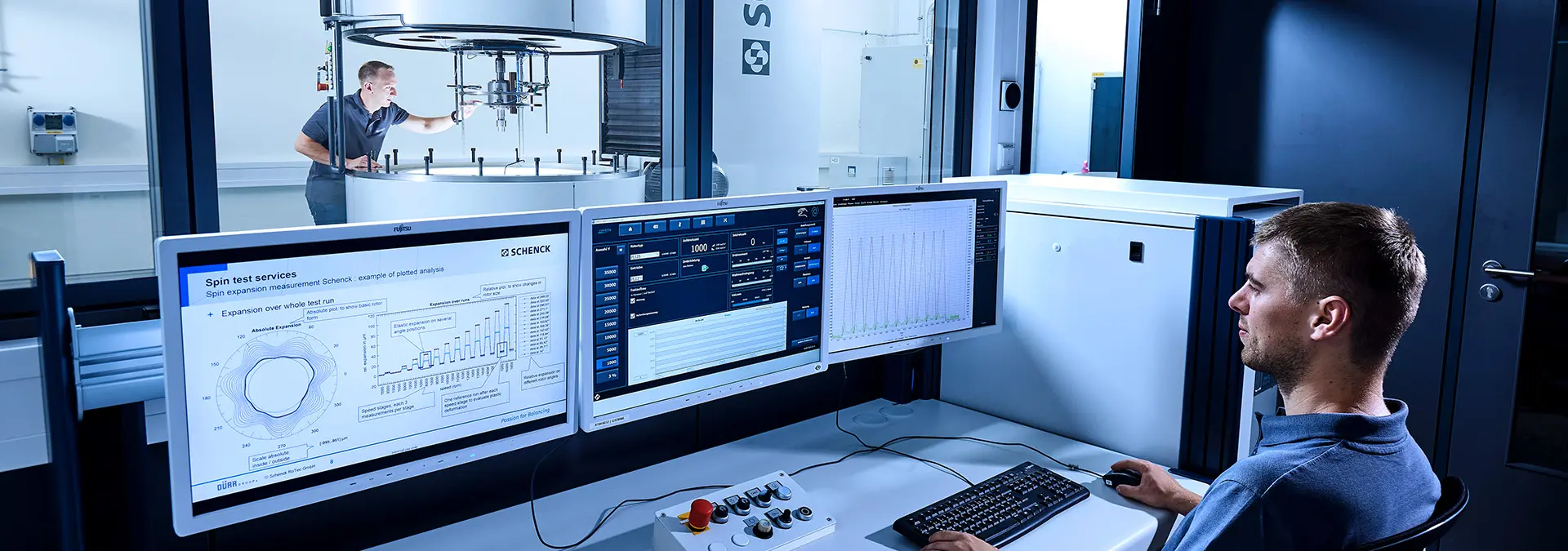
Your advantages with centrifugal force tests from Schenck Our service for you: Prototype testing, spin testing serevice, process optimisation
Early detection of weak points
Quality assurance
Strength test at overspeed
Service life test
Avoidance of expensive rework
Quality monitoring of production
Quality assurance for rotating components
As soon as a component is available as a prototype, its weaknesses are unknown. In our test field, we analyse rotors and assemblies and determine their behaviour in real operation. For rotors that have to withstand high centrifugal forces, we offer our service for strength and expansion tests up to 250,000 min-1, as well as burst tests for operational safety. We also carry out all necessary work on your test specimens for new and further developments or as part of quality assurance.
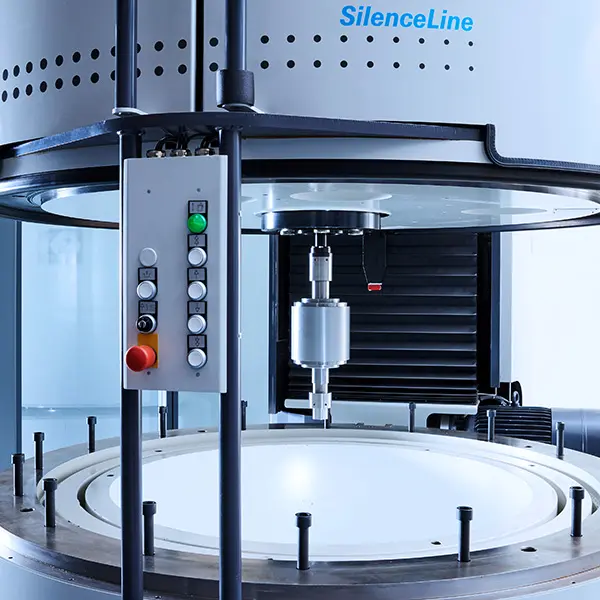
Our spin service for your prototype
Spin test:
Pre-Spinning, Overspeed tests, cycle tests, burst tests
Performance data:
up to 400kg rotor mass, up to 250,000 rpm, up to 1000mm rotor diameter
Spin test tooling:
Customised design, construction and production
Rotor heating:
up to 250° Celsius. Higher temperatures on request. Also suitable for burst tests.
Dynamic expansion measurement:
360-degree analysis of individual rotors and analysis of elastic and plastic behaviour
Optical expansion and strain measurement:
Full-surface analysis of the entire rotor surface with crack detection - Our own alternative to strain gauges: Rotational Optical Strain System (ROSS).
Rotor burst tests with high-speed camera:
High-speed video during burst tests
Visual inspection & high-definition video:
High-resolution visual inspection at standstill or during the spin cycle
Unbalance analysis:
Measurement of the unbalance condition before and after spinning, including detailed analysis of the changes and assignment of causes in the rotor design
Plastic deformation analysis:
Comparative measurement of the geometry before and after the centrifuging process and detailed analysis of the plastic deformation
Innovation from Schenck - Optical strain measurement of rotors with ROSS technology
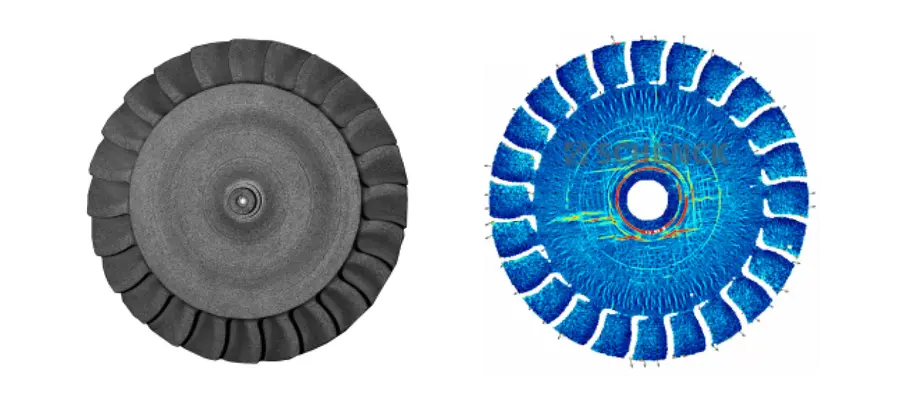
ROSS: Holistic measurement for rotor development
With its ROSS technology (Rotational Optical Strain System), Schenck RoTec enables a completely new form of strain measurement. This measures the deformation of a rotating body in the entire cross-section - during rotation. It is used, among other things, during the development and testing phase of new rotors. ROSS measures the deformation of the entire cross-section of a rotating body during rotation, not just at individual points.
Full surface analysis
ROSS technology detects cracks during testing and collects complete field data. High-resolution cameras and flash lighting capture the rotor multiple times under centrifugal force, enabling weak points to be detected at an early stage. By precisely correlating deformation with rotational speeds, ROSS simplifies design optimization. Unlike conventional methods such as strain gauges, it offers comprehensive, detailed analysis.
Reduce weight, increase performance
ROSS is ideal for the development of rotors that are subject to high centrifugal forces, such as eVTOLs, eDrives and turbine discs. It enables precise analysis of innovative materials such as carbon fibre composites and helps to reduce the amount of material and weight. In the eDrive sector, it also supports the fulfilment of requirements for accuracy, durability and cost efficiency.
Our expertise for your product quality Benefit from decades of experience in the analysis and optimisation of rotating and oscillating systems - for maximum product quality, efficient processes and high operational reliability.
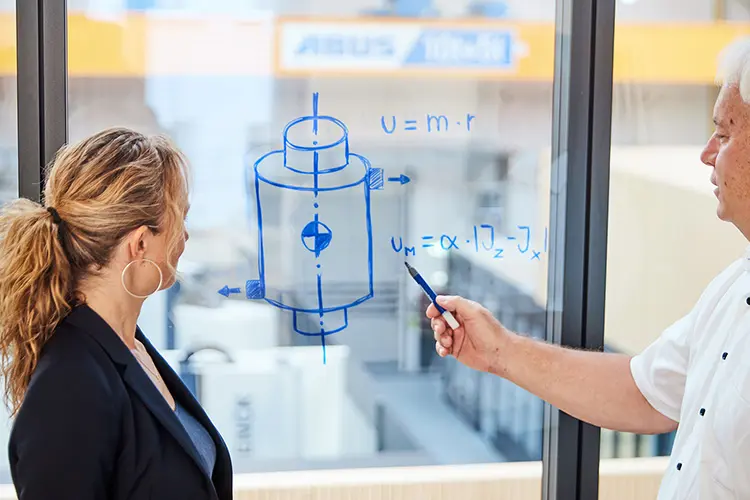
Technological progress for your rotor
We carry out all the necessary work on your test specimens for new and further developments or as part of quality assurance. Simply use our Schenck spin test rigs to gain a better understanding of your rotors. The spin test stands are ideal for development, testing small pre-series and random quality monitoring of production.
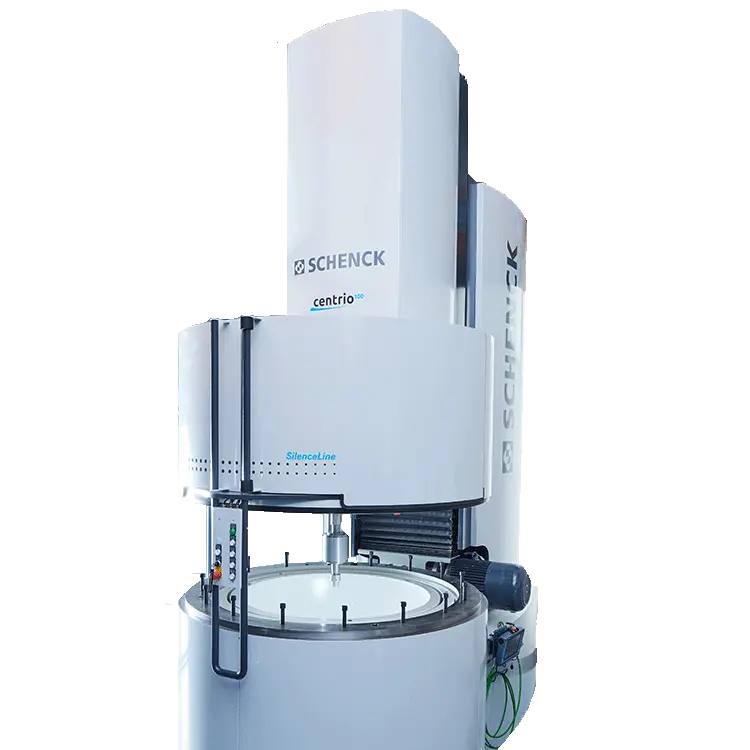
Centrio
Napędy elektryczne
Electric Drives
Centrio
Spin test systems
Centrio
Schenck Centrio spin test systems are used to test rotating equipment for the development, manufacture, and quality assurance under centrifugal force. The main areas of application are: material consolidation, strength testing, burst testing, LCF testing (long-term fatigue testing), and HCF testing.
The test rig contains a vacuum-tight chamber with integrated burst protection.
- Maximum rotor weight: up to 6,300 kg
- Maximum rotor diameter: up to 2,700 mm
- Maximum rotor length: up to 2,250 mm
- Maximum speed: up to 250,000 rpm
Green Technology Center Support from prototype development to series production
Schenck's Green Technology Centre in Darmstadt accelerates rotor testing with centralised, modern equipment, improves product quality and shortens development times. It offers cycle and burst tests to simulate rotor behaviour over the service life and identify weak points - for targeted optimisation. As a global leader in balancing technology, Schenck RoTec supports manufacturers in rotor development, spin tests, burst analyses, process consulting and certification - especially in the context of e-mobility.
Factory balancing with Schenck
Targeted correction of imbalance during operation
With our SmartBalancer, we can balance rotors of any size and weight quickly, cost-effectively and precisely on site - without dismantling. The portable device detects the imbalance immediately and corrects it directly during operation by adding weights or removing material in one or two planes.
